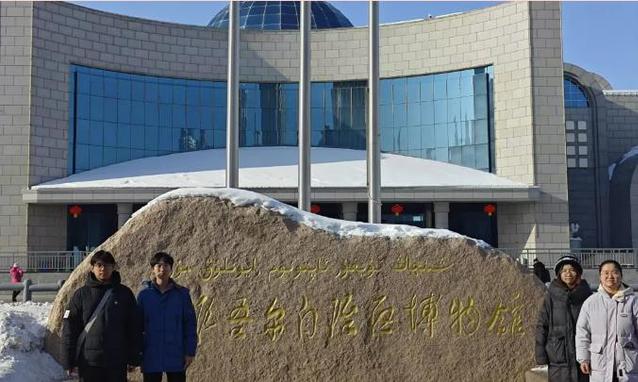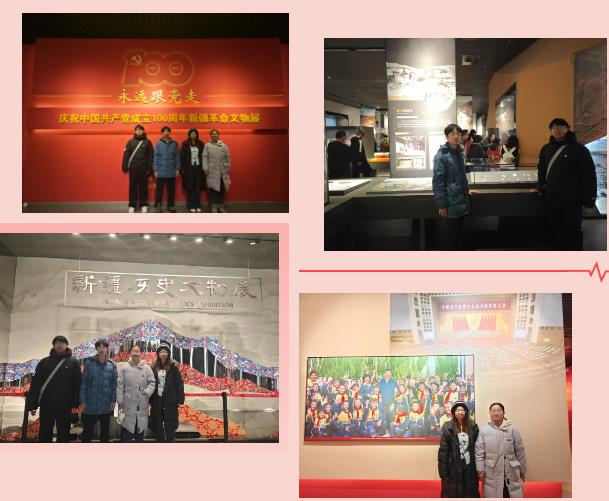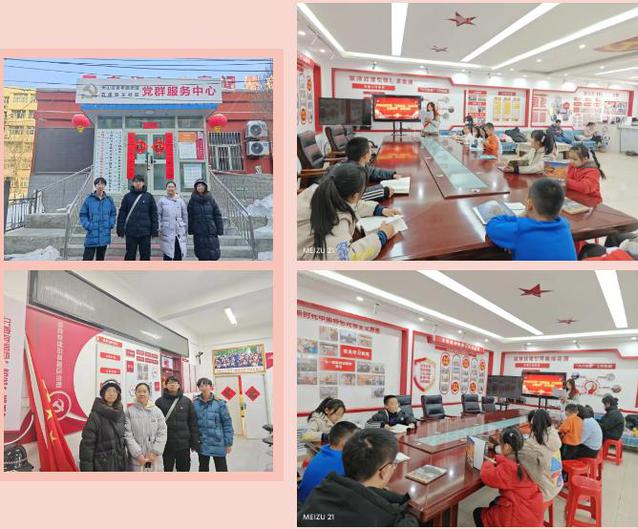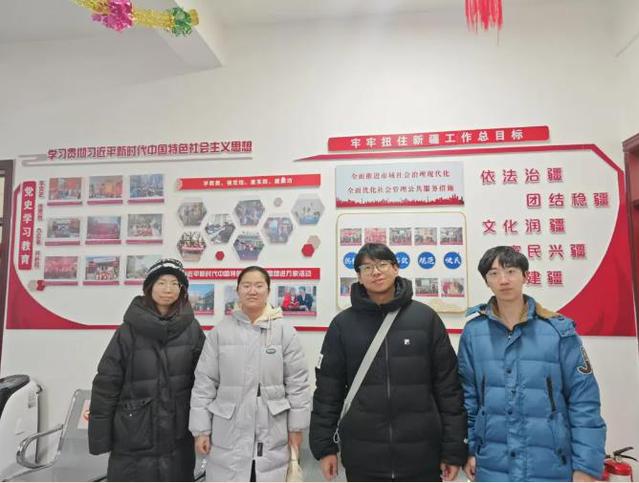Building Dreams Together, Symbiosis Along the Silk Road
Xinjiang, this vast and mysterious land, boasts a long history, splendid culture, and unique folk customs. To gain a deeper understanding of Silk Road culture, on February 8, 2025, members of the Silk Road Symbiosis practice team from Ocean University of China took advantage of their winter break to visit the Xinjiang Uygur Autonomous Region Museum. Amidst the vast expanse of history and culture, they embarked on an unforgettable journey of cultural exploration.

1
The moment they stepped into the museum, the team members felt as though they had unfurled a vast historical scroll. Ancient Silk Road artifacts quietly narrated the glories of the past, while the traditional costumes and handicrafts of various ethnic groups bloomed like vibrant flowers in the river of time—each exhibit engraved with Xinjiang’s unique historical memories. Immersed in this fertile cultural soil, the students experienced the distinctive charm of multi-ethnic integration.
As the tour deepened, the team gradually came to appreciate Xinjiang’s pivotal role as a key hub along the Silk Road. Exquisite silks, their patterns flowing with millennia of elegance; lustrous ceramics, their glazes suffused with the prosperity of bygone eras; and trade documents recording bustling exchanges—every word brimming with the fervor of ancient East-West interactions. Through these artifacts, the students seemed to traverse time, witnessing firsthand the thriving scenes of merchant caravans and cultural convergence that once flourished here.

2
Expanding the Influence of Silk Road Culture Among the Younger Generation
To broaden the reach of Silk Road culture among youth, the Silk Road Symbiosis team visited Wuxing Road Community and Jingming Community in Urumqi to conduct a themed lecture series titled A Journey Through Xinjiang's History and Culture.
Before the lectures, the team designed an easy-to-understand questionnaire for children to gauge their prior knowledge and interests regarding Xinjiang’s history and culture. During the sessions, the presenters first introduced the history of the Silk Road and Xinjiang’s pivotal role as a crossroads of Eastern and Western civilizations, using vivid images and videos to enhance engagement.
Next, the team showcased Xinjiang’s intangible cultural heritage, with a special focus on the Twelve Muqam (a classical musical tradition) and the Epic of Manas, allowing the children to appreciate the depth and richness of Chinese ethnic culture. Finally, the presenters shared personal stories about how different ethnic groups in Xinjiang unite and strive together to build a prosperous homeland, fostering a sense of ethnic solidarity among the young audience.
The event was well-received, with the children gaining a deeper understanding of Xinjiang’s history and culture—and more importantly, developing a strong curiosity to learn more.

Xinjiang, as a vital part of the Silk Road, carries profound historical and cultural significance. The recent initiative by Ocean University of China's Silk Road Symbiosis practice team was not merely a cultural exploration, but a dynamic exercise in cultural preservation. Team members unanimously expressed how this experience deepened their understanding of the Silk Road culture's contemporary value and the crucial importance of its transmission.
Looking ahead, the team plans to extend their outreach to more communities in Qingdao, sharing the legacy of the Silk Road to ensure its history and culture continue to shine across broader horizons.

Photo: Su Zhirui, Zhao Wenyan, Zhang Xinrui, Cai Linjun
Text: Li Yeyuan, Liao Shiqi, Jayla·Nurbay
Editors: Li Yeyuan, Liao Shiqi, Taibai Sumu
Reviewers: Yang Wenzhao, Dong Fei


